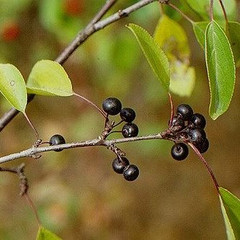Description
Sea buckthorn (Hippophae rhamnoides) is an excellent choice for an informal windbreak or hedge in windy, exposed locations or coastal areas. It is a deciduous shrub, which has small narrow pointed light silver foliage, and grows into a dense shrub approx. 3m tall. Apart from its ability to thrive in poor, sandy soils, the main benefit (to gardeners and to local wildlife) are the huge crops of shiny orange berries produced by female plants. They are exceptionally nutritious, having high levels of Vitamins C and E, as well as healthy carotenoids and flavonoids - sea buckthorn extracts are widely available as a herbal remedy for all manner of maladies. Only the female plants produce berries, and they will need a male plant nearby to pollinate them. Unfortunately there is no way to tell them apart until they are older and have started flowering, but if you plant a few the laws of probability mean you should get some berries - and even one female plant will produce plenty.Sea buckthorn, as the name suggests, will thrive in very light, sandy soils. Although it will tolerate a richer soil, it is best avoided in damp sites where it will struggle. As an added advantage, the roots produce nodules which help fix nitrogen into the soil.
The name Hippophae comes from the Greek words hippo meaning horse, and phaos meaning to shine - the Ancient Greeks used Sea buckthorn leaves to feed their horses which reputedly made their coats shinier. Sea buckthorn is still used extensively as an fodder crop.








